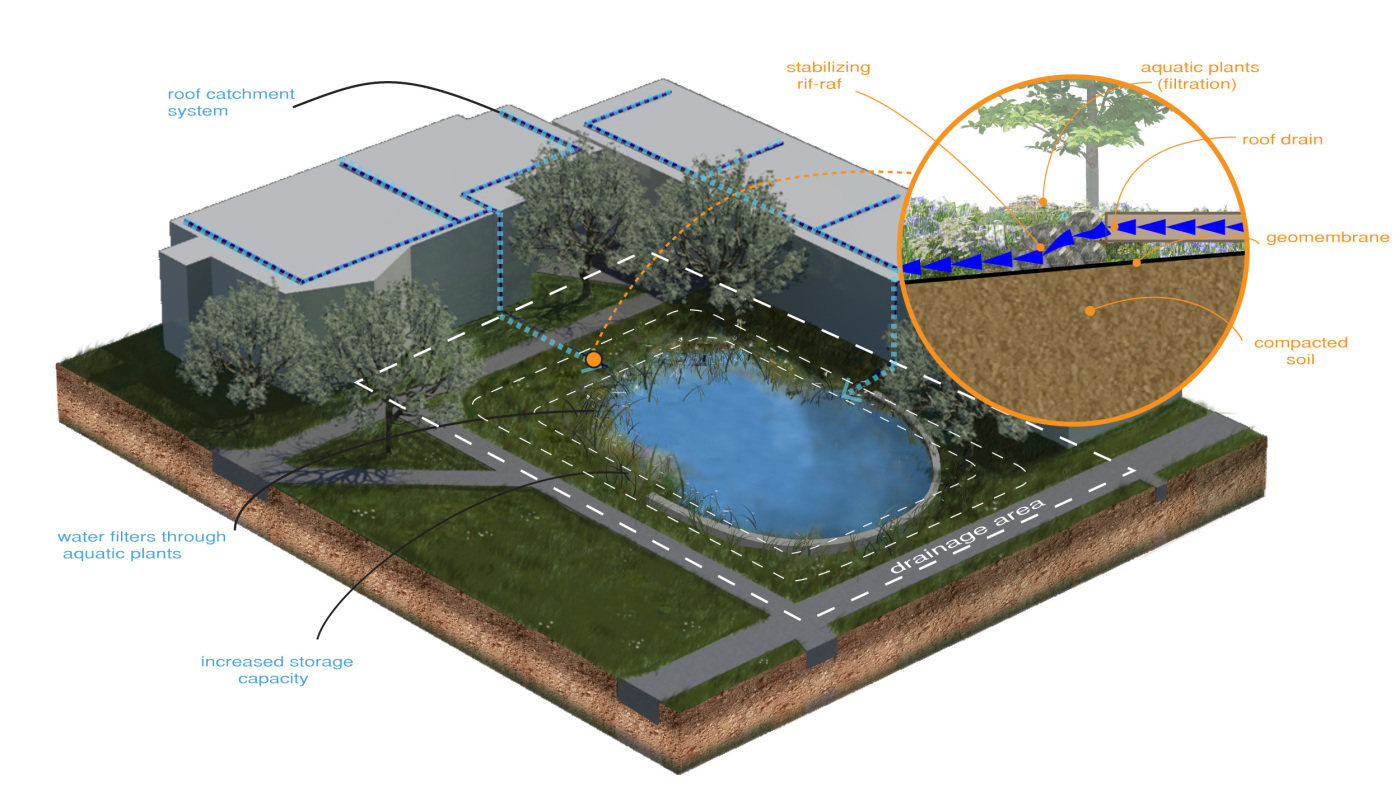Landscape Architecture for Landscape Architects › Forums › TECHNOLOGY › Are (or were) 3ds Max and Rhino a part of your LA curriculum?
- This topic has 1 reply, 18 voices, and was last updated 12 years, 7 months ago by
 Thomas J. Johnson.
Thomas J. Johnson.
-
AuthorPosts
-
April 24, 2013 at 7:40 pm #167930
 Kellie SpenceParticipant
Kellie SpenceParticipantFast forward to 2013.
I’ve just finished my MLA degree at the University of Guelph (great school!)
I have AutoCAD (2D+3D), SketchUp and Vectorworks. So I ask the same question….Rhino or 3DS Max to start?
Thanks in advance!
Kellie
April 24, 2013 at 9:11 pm #167929 Andres F. PinedaParticipant
Andres F. PinedaParticipantI graduated from Florida Internation University FIU – Our program was very visually / technologically driven from my perspective.
Rhino 3d was part of the curriculum while 3Ds became optional.
The use of Rhino became essential in our studio as a mode for the final product and representation. Sketching had now become that skill that allowed us to start and build up our ideas.
We did not only use Rhino for its 3D capabilities, but also for Model building through the CNC machine and 3D printer. Later on I found my self switching from Rhino to Sketchup as its location capabilities, terrain tools and warehouse worked phenomenal and modeling became a breeze, but its hard edges did not allow me to become to creative.
One day I stumbled upon a project in which its organic shapes made it impossible to work with either Rhino or Sketchup and turned to 3D’s.
When I look back, I can say that while I did look at tutorials (Although; they made me fall asleep) what helped me the most through the learning curve of these programs was doing an actual project of mine that I needed to get done and having a deadline. That feeling of not knowing the program and trying to figure things out on my own through youtube and forums because my free educational source.
Additionally, if you are thinking about seminars make sure the topic correlates to what your trying to accomplish from the program. All these 3d programs have such vast capabilities and you wouldn’t want to learn 3d’s max ringing if you are trying to figure out how to do topography…
With that said, I would look for tutorials that have to do with: Internal / External Lighting, Architecture modeling , Interior modeling, External modeling.
Some good online sources are:
April 24, 2013 at 10:34 pm #167928 Roland BeinertParticipant
Roland BeinertParticipantI’ve seen the same job postings. They usually don’t say that this knowledge is required, but that they will give preference to candidates who know rhino,3ds max or similar programs. This sort of preference may be more common for multi-disciplinary firms that do a lot of architecture, so that candidates can work with the same software other employees use. That’s just a guess.
University of Idaho only teaches sketchup, autocad, gis and photoshop to landscape archtecture students. Oddly enough, gis, which is far more useful to LA’s, is mentioned less in job ads than 3-d programs.April 25, 2013 at 11:19 am #167927 Andrew Garulay, RLAParticipant
Andrew Garulay, RLAParticipantIdaho taught 3D Studio Max when I was there in ’97.
April 25, 2013 at 6:46 pm #167926 Roland BeinertParticipant
Roland BeinertParticipantMaybe they do still, but I don’t think so. I asked around when I was there, and no one mentioned a course on it. They had a basic course on CAD and sketchup and then another more advanced course taught by a fellow grad student, who knew how to get really great results with just CAD, sketchup and podium. There may have been other courses I didn’t hear about since I only went there for grad school.
April 25, 2013 at 7:21 pm #167925 Akin AdekileParticipant
Akin AdekileParticipant3ds Max can be intimidating at first, but once you get the fundamentals it’s not so bad. A neat trick is to do the linwork in autocad, export it to 3dsmax, and extrude from there. All your lines need to be a boundaries (inclosed polylines) though for it to work . I would suggest purchasing videos on digitaltutors.com and thegnomonworkshop.com. I would personally avoid youtube and other free sources, since it’s normally amateurs that upload those vids. It’s better to watch toturials made by the professionals. Much better learning experience. I wish I was taught it in school.
April 29, 2013 at 12:24 am #167924 Eli PaddleParticipant
Eli PaddleParticipantI too have noticed many job postings asking for 3DS and Rhino and as a professor who teaches this subject area, I respond by adding these to what is taught in my program. In addition we also teach Vue as a final part of our landscape visualization workflow. The base of this workflow is SketchUp with IRP programs (i.e. Twilight Render) and many plugins. In my opinion hand drafting and tradition illustration skills don’t suffer nor does our design, but these are taught in separate classes and not as part of studio. I try to give my students as many tools as possible to use and they choose what they become experts in through self exploration and find their own “voice” when it comes to design visualization. In their final years of study they are able to visualize the design work they do in whatever fashion they choose from static hand graphics to photo-realistic animation.
If you are learning on your own Rhino will be much more accessible than 3DS. The learning curve is steep for 3DS.
While these skills are certainly not ones that an LA cannot live without, it is nice to be conversant in these applications so that you know what the capabilities are, but you also don’t want to get type-cast as the “3D guy or girl”.
April 29, 2013 at 5:26 am #167923 Kellie SpenceParticipant
Kellie SpenceParticipantThanks to everyone for their feedback.
I see that Rhino is used more for modelling while 3ds Max is used for rendering and animation. Since my interest leans toward the rendering side of things, it seems to point to 3ds Max. However, it also makes me wonder if I should just spend more time with SketchUp and learn rendering plugins like V-Ray, Shaderlight + Twilight.
With that said, I would agree with the comment that it’s important to be conversant with various tools – so exposure to either Rhino or 3ds Max wouldn’t hurt the resume and adds to my experience.
Cheers!
Kellie
May 1, 2013 at 5:37 am #167922 Blair LeJeuneParticipant
Blair LeJeuneParticipanti am a third year undergrad LA and i can say not many people in our studio use it. although we did have a class that taught us digital representation (sketchup, 3ds max, illustrator, photoshop, indesign). if you have your line work done correctly drawn, meaning closed splines in autocad, and everything in seperate layers, then you can build a model and render in and hour an a half give or take a few minor adj. i did this for a studio project using 3ds in about 6 hours from linework to finished render and diagram.
 May 1, 2013 at 5:04 pm #167921
May 1, 2013 at 5:04 pm #167921 Addison PritchardParticipant
Addison PritchardParticipantUnfortunately my class never got the opportunity to experience either of those programs within our curriculum. My program was in the middle of a transition revamping the curriculum and my class had the privilege (slightly sarcastic) of being the guinea pigs.
I think it would be greatly beneficial and place students at the fore front of design (or close to) if they could explore and work with these 3d programs. As I’m applying to internships it’s evident that working in 3D programs is something that is a common practice now. although, if an applicant has a robust set of tools and basic experience within different aspects of design I do believe they still have as great a chance of landing a position at a firm as someone who may have experience with 3D programs.
May 3, 2013 at 2:42 am #167920 Tosh KParticipant
Tosh KParticipantThere’s a difference btw being taught the programs and being knowledgeable. It seems that it’s reasonable to expect exposure to the software but if someone can’t work in them fast enough, it’s not really worth the bother for an employer. Then there’s the whole area of whether someone can use it as a meaningful design tool…
-
AuthorPosts
- You must be logged in to reply to this topic.


